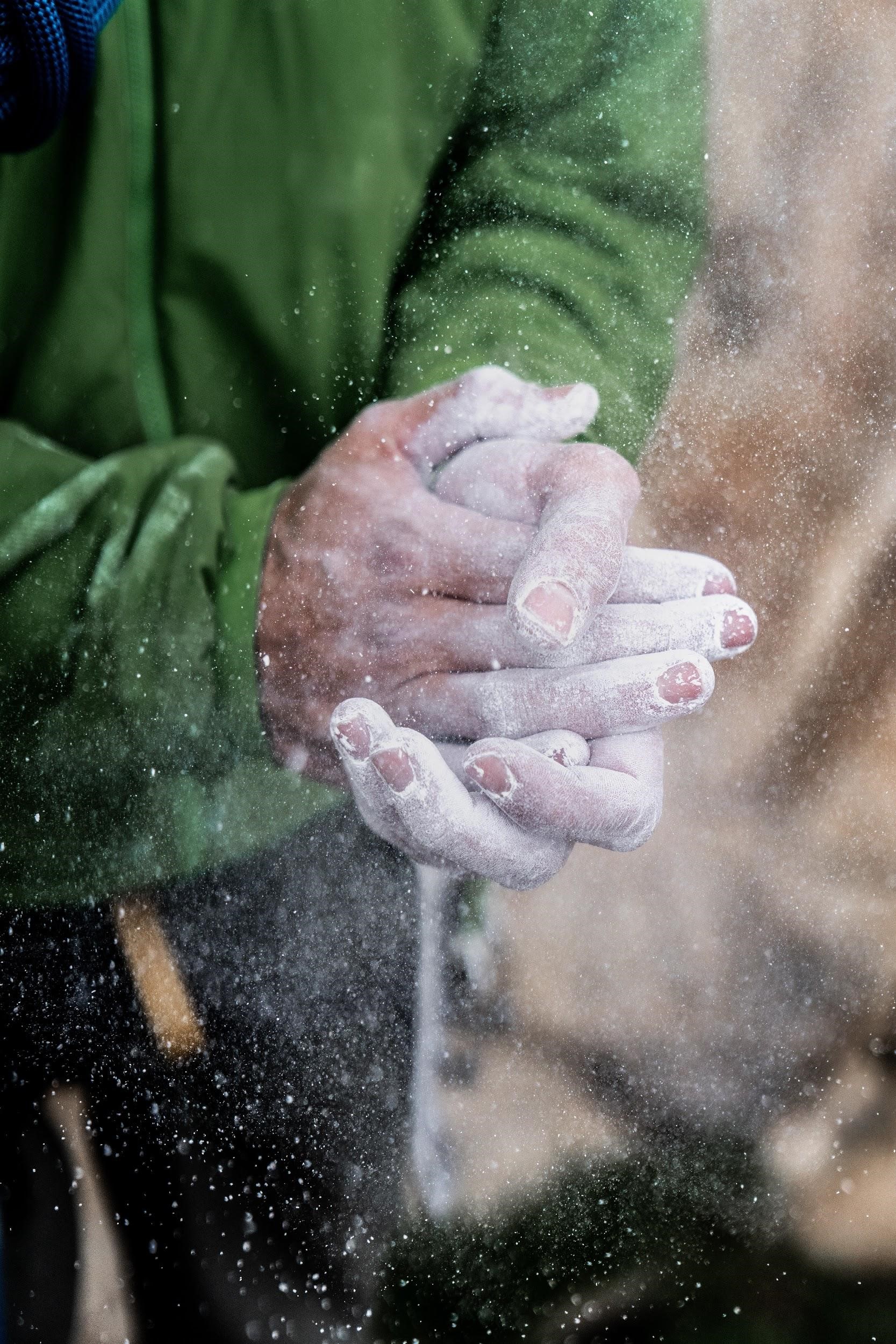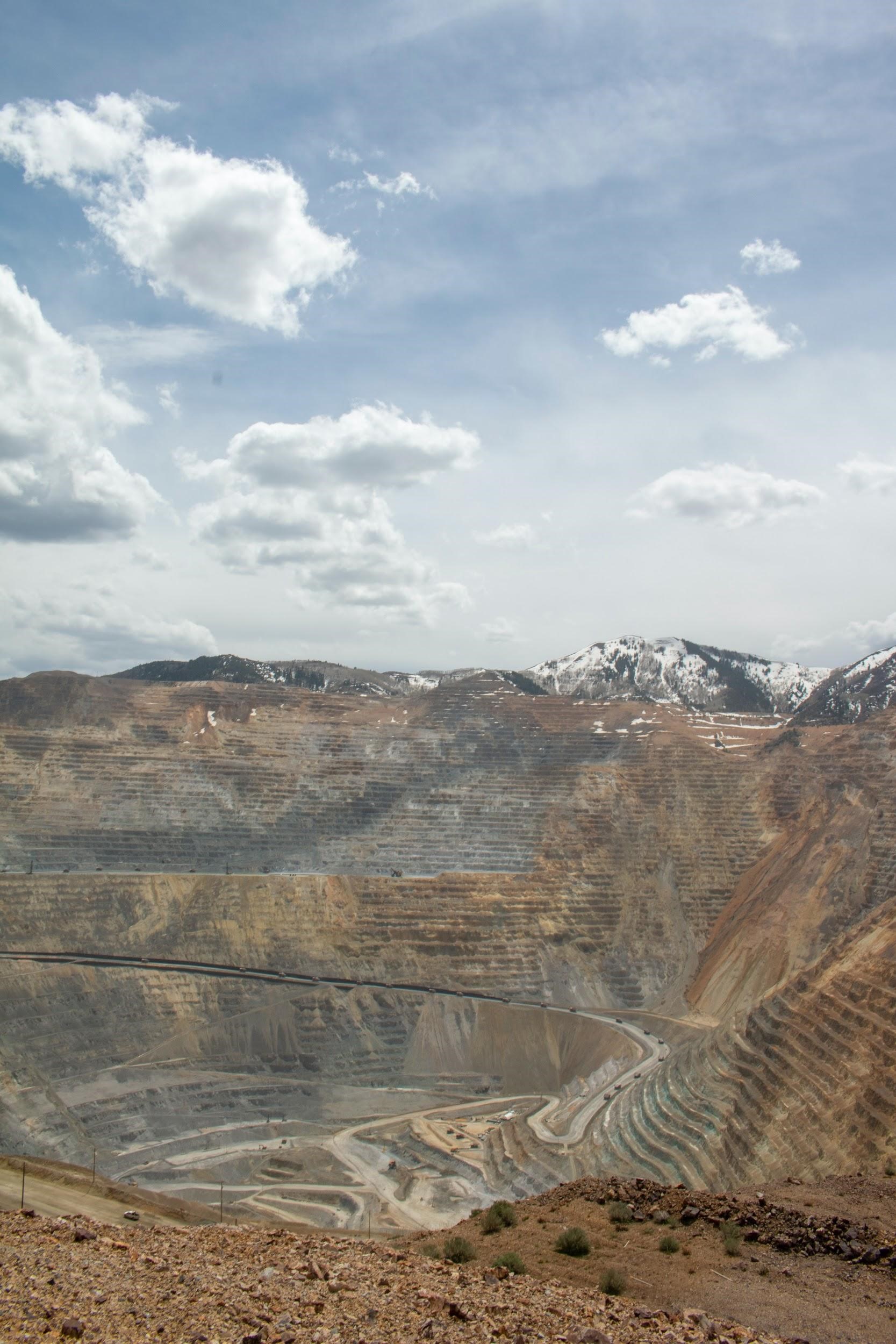Most climbing chalk is made from magnesium carbonate (MgCO3). You will most likely find white chalk, but other colors are possible. Climbing chalk’s components are the same as the chalk used by other athletes to dry their hands and improve their grip.
Introduction
Chalk has become a pivotal tool for many athletes across the world from CrossFit to gymnasts to weightlifters. It’s designed to give you better grip, stop sweat, kill bacteria, and improve the friction between your hands and the bar – or rock.
If you want to know which chalk you should be using, check out our article on the best climbing chalk. Otherwise, carry on reading to discover chalk’s inner workings and to get some answers to some common chalk related questions.
What is climbing chalk made of? Do I really need it to go climbing? Can climbing chalk impact your health? How does it impact the environment?
Let’s dive in and find out the answers!
What Is Climbing Chalk Made Of?
Climbing chalk is made from magnesium carbonate. Magnesium carbonate is a solid, white, inorganic mineral that is insoluble in water. But this mineral is just the base. Almost every brand of chalk will have a slightly different texture as other chemicals are added to improve performance.
Every climber has their personal chalk preference. Still, some companies seem to produce chalk that’s more effective at drying your hands and improving your grip than others.
The secret to these high-end climbing chalks is their extra ingredients. These commonly include limestone, essential oils, and drying agents.
For example, Metolius adds a drying agent to their Super Chalk making it a great choice if you have sweaty hands. Primo Chalk uses a specific essential oil blend to kill bacteria. These variations in ingredients highlight that not all climbing chalk is equal. Not everyone’s hands will react the same when climbing. So these chalk additives can help you determine the perfect type of chalk for your body.
Different Types of Climbing Chalk
There are four types of chalk commonly used in rock climbing:
- Block chalk
- Liquid chalk
- Loose chalk powder form)
- Powdered chalk stored in a cloth bag
Buying a chalk block is usually the cheapest option. When manufacturers produce chalk in block form, it cuts down on the processing because they don’t have to crush and filter it. But this can be messy for you as you’ll have to break it apart to put it in your chalk bag.
Pro tip: put the chalk block in a durable (maybe doubled) plastic bag, crush it, and then add to your chalk bag as needed. Make sure you let the air out of the bag before crushing to prevent it from exploding.
Liquid chalk is magnesium chalk powder that has been dissolved in alcohol or another solvent. To apply, squeeze some onto your palm just as you would when applying lotion. Smooth it out and let it dry. This gives you a nice, thick layer of chalk that stays on your hands much longer.
It’s best used when bouldering or as a base layer for longer routes. When bouldering, you take breaks in between problems, allowing you to reapply liquid chalk. You’re also doing moves at the limit of your ability when even a small increase in grip could be the key to sending your project.
Pro tip: For best results, apply a layer of liquid chalk, let it dry, and then use powdered chalk on top. The liquid chalk will keep your hands dry and help the other chalk stick.
Loose chalk is one of the most commonly purchased chalks for climbing. It may come either as a fine powder or powder with chunks. Both consistencies have their advantages and disadvantages. The main disadvantage of loose chalk is that it often creates a large dust cloud when used. It can also easily escape from chalk bags, leaving a chalky mess.
To combat the messy nature of powder chalk, chalk balls came into play. You can buy refillable chalk socks to put your loose chalk into. Place the chalk ball into your chalk bag and give it a squeeze to coat your hands as you climb. It takes a bit more effort to get a good layer of chalk from a chalk ball, but many climbers prefer them.
Some companies also sell chalk balls that cannot be refilled. These often come with new chalk bags. But trust us, investing in a bag that you can refill time and again is a small, yet worthwhile, investment.
Is Climbing Chalk Bad For You?
Climbing chalk is generally safe for humans. You could even eat small bits of it, and you would be fine. The main concern with chalk and human health is inhalation.
Breathing in magnesium carbonate powder in small amounts isn’t likely to do you much harm. But in rock climbing gyms, there can often be a lot of chalk dust floating around. In fact, a 2016 report on gym air pollutants found that powdered chalk caused high levels of particulates in the air.
But does this actually harm you? The answer is – perhaps.
Any form of dust in large amounts can be harmful to people with allergies or chronic respiratory conditions like asthma. Even worse, it’s one of the fastest ways for bacteria to be transmitted from one person to another. Bacteria struggle to move around in the air. But if they have something like dust to attach to, they can travel more easily.
In short, climbing chalk is not dangerous for humans, but it can have adverse effects when airborne in high concentrations indoors. Some climbing gyms have ventilation, air purification systems, and cleaning regimens to reduce the impact of chalk dust, but air quality varies by location.
Many climbing gyms ban powdered chalks, meaning your only option is to use liquid chalk or a chalk ball.
Environmental Impacts of Climbing Chalk
Athletic chalk hasn’t always been used in climbing. It was introduced to the sport in the mid-1950s. When climbing started to gain popularity, climbing chalk became a business of its own. Now, you’d be hard-pressed to find a climber that doesn’t have chalky hands when they climb.
Still, some purists refuse to use chalk at all. There are even some areas in Colorado, Minnesota, and Utah that ban chalk use.
In some locations, chalk is banned because it is unsightly for other people enjoying the landscape. Ecologically, climbing chalk does not pose a huge threat when used by a climber on rocks like granite and quartzite. On more porous rocks, such as sandstone and limestone, the chalk can be absorbed leaving behind polished blemishes.
But our use of chalk outside is only one part of the environmental problem.
The vast majority of magnesium carbonate chalk comes out of mines in China. Unfortunately, these mines have seen some extreme environmental changes due to the uptick in consumer demand.
Mining emits dust, which settles on the ground around the mine. This dust eventually creates a hard crust that contaminates the surrounding soil.
Over time, the layer of magnesium carbonate begins to inhibit soil functions and ecological processes. It can prevent plant growth and slow water penetration rates.
We often only think of the impact we are having when we use chalk outside. It seems that the real environmental damage is done before we get to the crag – far away and out of our sight.
Other Frequently Asked Questions
Do You Need Chalk to Climb?
No. But many accomplishments climbers have made in the last century may not have been achievable without chalk. For instance, climbing 5.15 may not be possible without the use of chalk.
Is Climbing Chalk the Same as Blackboard or Sidewalk Chalk?
No. Chalk for rock climbing is made from magnesium carbonate. Blackboard and sidewalk chalk is made from calcium carbonate (CaCO3). Calcium carbonate is not as useful for climbing chalk as it absorbs moisture and dissolves in water. Not much good when you have sweaty palms!
Can I Make My Own Chalk?
That depends. You’re unlikely to be able to mine magnesium carbonate directly, but you can use block or loose chalk to create your own liquid chalk.
Conclusion
We hope you enjoyed our discussion about the origins of chalk! To recap, magnesium carbonate is the main ingredient in climbing chalk, with different brands adding extra additives. If you have any questions about this post, feel free to comment below.
Now that you know what’s in it, take a look at our list of the best climbing chalks to find the perfect chalk for your next climbing adventure.


